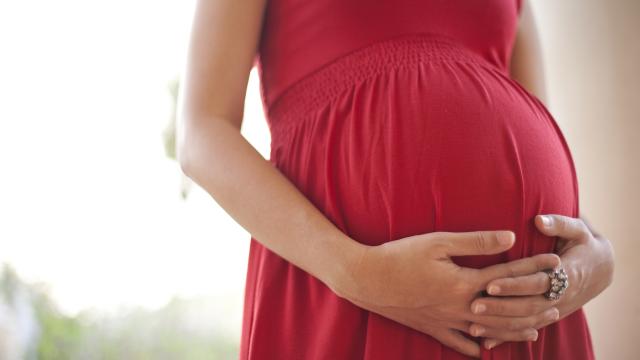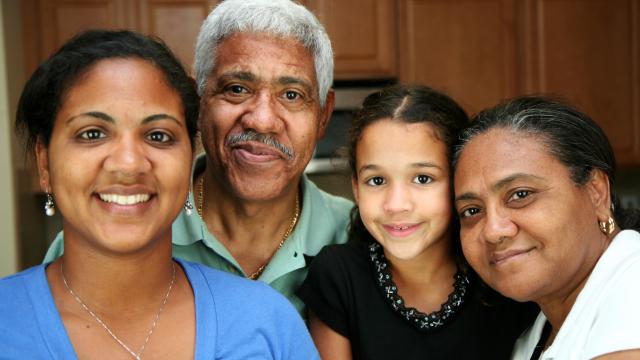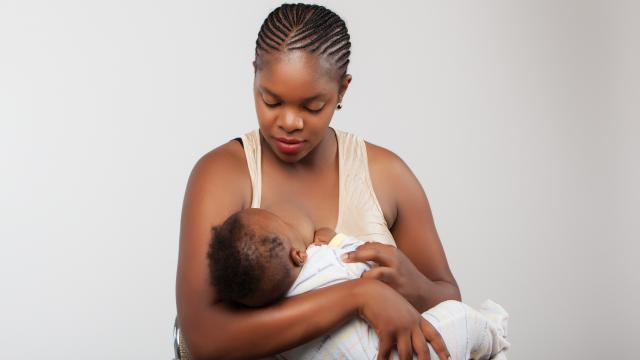Maternal and Child Health (MCH) Program (Title V)
Title V MCH Block Grant announcements
Thank you to those who applied for the recent multi-year projects addressing the needs of mothers, children (including children and youth with special health care needs), and families in Wisconsin. Applicants awarded funding are listed by priority area. Additional awarded applicants will be added as named.
If you have questions regarding the funding application and process, email the program at DHSDPHMCH@dhs.wisconsin.gov.
Dual Protection clinics: The purpose of this funding opportunity is to aid reproductive health and family planning clinics in providing dual protection services to persons living in Wisconsin. Dual protection, a prevention strategy to prevent both pregnancy and sexually transmitted infections, is an integral intervention in a reproductive health and family planning program. A dual protection clinic’s minimal requirements include the promotion and distribution of condoms and at least one type of emergency contraception.
- Ashland County Health and Human Services
- Bayfield County Health Department
- Chippewa County Department of Public Health
- Clark County Health Department
- Cudahy Health Department
- Douglas County Community Health Clinic, Inc. dba Health Care Clinic
- Florence County Health Department
- Fond du Lac Co Health Department
- Healthfirst Network
- Kenosha County Public Health
- Newcap, Inc.
- Oneida County Reproductive Health Clinic
- Pepin County Health Department
- Polk County Health Department
- Public Health Madison and Dane County
- Sawyer County Health and Human Services
Perinatal Mental Health Access Expansion: The purpose of this funding opportunity is to improve access to perinatal mental health provider services and resources that support pregnant and postpartum women up to 12 months statewide.
Medical College of Wisconsin (Periscope Project)
Birth Worker Training and Workforce Development: The purpose of this funding opportunity is to provide training and development opportunities for Wisconsin’s birth workforce to increase access, support, and resources for pregnant individuals and their support persons.
Wisconsin Association for Perinatal Care
Doula Recruitment and Training with Sustainability Support: The purpose of this funding opportunity is to provide training for new doulas and to expand continuing education for doulas.
- African American Breastfeeding Network
- Roots4Change Cooperative
- Wisconsin Doulas Association, Inc.
Support for Universal Developmental Monitoring and Screening: The purpose of this funding opportunity is to improve developmental screening and monitoring statewide, through training, education, outreach, and collaboration to help all children reach age-appropriate developmental milestones.
Children's Health Alliance of Wisconsin
Enhancing Youth Mental Health Resources through Quality Improvement and Collaboration: The purpose of this funding opportunity is to empower and engage youth as leaders in public health, with a focus on mental health. Through this initiative, youth will participate in state-level engagement activities and lead community health improvement projects. Providing and connecting youth to opportunities will center youth voices in decision-making processes that directly affect their well-being.
Wisconsin Women's Health Foundation
Statewide Youth Engagement: Youth Voice, Trainings, and Support for Best Practices to Improve Youth Mental Health: The purpose of this funding opportunity is to empower and engage youth as leaders in public health, with a focus on mental health. Through this initiative, youth will participate in state-level engagement activities and lead community health improvement projects. Providing and connecting youth to opportunities will center youth voices in decision-making processes that directly affect their well-being.
Embolden WI
Health Benefits Counseling, Training, and Advocacy: The purpose of this funding opportunity is to provide benefits counseling, coordination, and support for children and youth with special health care needs (CYSHCN) and their families.
ABC for Health
Children's Resource Centers for Children and Youth with Special Health Care Needs (CYSHCN): The purpose of this funding opportunity is to provide information and referral services to children and youth with special health care needs (CYSHCN), their families, and providers.
- Children's Hospital (Northeastern Region)
- Children's Hospital (Southeastern Region)
- Chippewa County Department of Public Health (Western Region)
- Marathon County Public Health (Northern Region)
- Waisman Center (Southern Region)
Wisconsin Statewide Public Health Referral and Access Program for Children and Youth with Special Health Care Needs (CYSHCN): The purpose of this funding opportunity is to host the 1-877-WISCWAY Wisconsin Wayfinder phone line by routing phone calls from families and providers of children and youth with special health (CYSHCN) to their local Children’s Resource Center and to create an online CYSHCN-specific resource navigation tool for CYSHCN families and providers.
Wisconsin Women's Health Foundation
Advisory Committee for Families and Caregivers of Children and Youth with Special Health Care Needs (CYSHCN): The purpose of this funding opportunity is to convene an advisory board consisting of parents and family members of children and youth with special health care needs (CYSHCN).
Family Voices of Wisconsin
Statewide Family Education, Training, and Advocacy for Children and Youth with Special Health Care Needs (CYSHCN): The purpose of this funding opportunity is to provide statewide learning opportunities to support children and youth with special health care needs (CYSHCN) and their families.
Family Voices of Wisconsin
Peer Support for Families and Caregivers of Children and Youth with Special Health Care Needs (CYSHCN): The purpose of this funding opportunity is to: A) provide peer support for parents/families of children and youth with special health care needs (CYSHCN) with an additional optional opportunity; B) serve as the lead agency providing guidance to all agencies qualified for part A.
- Children's Hospital (Part A-Southeastern Region)
- Chippewa County Department of Public Health (Part A-Western Region)
- Marathon County Public Health (Part A-Northern Region)
- Waisman (Part B-Statewide)
- Waisman Center (Part A-Southern Region)
- WisconSibs (Part A-Northeastern Region)
Training and Collaboration Support for Children and Youth with Special Health Care Needs (CYSHCN) Network
Family Voices of Wisconsin
Supporting Youth-Friendly Initiatives Serving Children and Youth with Special Health Care Needs (CYSHCN): The purpose of this funding opportunity is to provide training and education about youth-friendly healthcare services to children and youth with special health care needs (CYSHCN) and the professionals who serve them in healthcare and academic settings.
Embolden, WI
Developmental Screening, Referral, and Navigation Support: The purpose of this funding opportunity is to implement evidence-based strategies to increase access to developmental screenings and referrals, and to strengthen follow-up support for families in navigating services in rural areas, to help all children reach age-appropriate developmental milestones.
First 5 Fox Valley
Improving Social Connections: The purpose of this funding opportunity is to increase opportunities for social connections to improve health and wellness for Wisconsin women, infants, children, and families.
- Eau Claire City-County Health Department
- People of Progression
- The Parenting Network
- Wello
Strengthening Wisconsin Tribal Nations Food Sovereignty: The purpose of this funding opportunity is to strengthen Tribal Nations’ food sovereignty and traditional food practices in American Indian/Alaskan Native communities, including revitalizing traditional knowledge and practices. Projects that focus on or include efforts to strengthen support for Indigenous Milk and emphasize traditional practices of First Food for infants are eligible for this funding.
Feeding America Eastern Wisconsin
Food is Medicine Statewide Infrastructure: The purpose of this funding opportunity is to Strengthen Wisconsin’s statewide infrastructure that supports Food is Medicine coordination and implementation to improve nutrition security for all families.
Wisconsin Food is Medicine Coalition c/o UW-Madison School of Human Ecology
Improving Nutrition Security: The purpose of this funding opportunity is to improve nutrition security for Wisconsin women, infants, children, and families by increasing access to nutritious foods.
University of Wisconsin-Madison Division of Extension
We are grateful for your support on the statewide needs assessment! Your input helped us understand the needs for mothers, children, and families in Wisconsin. The program used data from the statewide community and organizational input surveys and focus groups, as well as existing state and national data to define our state's 2026–2030 grant cycle priorities.
- All women experience the safe and stable supports they need to live and thrive from preconception through 12 months postpartum.
- All women of reproductive age have nearby and affordable contraceptive care options and have safe, positive sexual experiences.
- All infants experience the safe and stable supports they need to live and thrive starting from birth to celebrating their first birthday.
- All children and their families experience timely, nearby, uncomplicated, coordinated care and supports to live and thrive.
- All adolescents have the reliable, timely, nearby mental health supports that they need, and are free from the harms of untreated mental health conditions.
- All children and youth with special health care needs and their families experience timely, nearby, uncomplicated, coordinated supports to live and thrive.
- All families experience emotional and physical safety in their communities, are free from discrimination, and have the social support they need.
- All families have enough food and adequate nutrition to live and thrive.
MCH programs and resources
The Wisconsin MCH programs work for a future where all people and families are healthy and thriving.
Wisconsin receives federal funding from the Health Resources and Services Administration to support programs and infrastructure to promote the health of Wisconsin’s families. We are now in our 2021–2025 grant cycle. View the MCH Services Title V Block Grant FY 2026 and FY 2024 Annual Report (PDF), that describes the activities funded by our grant in 2024 and our plans for 2026. Wisconsin gets funding for the MCH and CYSHCN programs through the federal Title V Block Grant. This grant is from the U.S. Department of Health and Human Services, Health Resources and Services Administration, MCH Bureau. With our grant, we give funding to local public health departments, Tribal agencies, and other organizations across the state.
The Well Badger Resource Center is a health information and referral program. If you have questions or are looking for resources for your family, Well Badger Resource Center can help you! There are many resources available to families in Wisconsin. Select a link to learn more. For help, visit the Well Badger Resource Center.
For health information and referral services:
- Call 800-642-7837 between 7 a.m. to 6 p.m., Monday through Friday.
- Email Well Badger (help@wellbadger.org).
- Visit the Well Badger website.
Perinatal mental health
Distressing feelings can happen during pregnancy or in the first year after having a baby. These feelings can make it difficult to take of yourself and your baby. For help contact your health care provider or visit a clinic. Other helpful resources include:
- The National Maternal Mental Health Hotline is free, confidential, and available 24/7 in 60+ languages. If you are feeling overwhelmed, anxious, or just needs someone to talk with, connect with their trained counselors. Call or text 1-833-TLC-MAMA (1-833-852-6262).
- Postpartum Support International offers a variety of free, online support groups for those who are pregnant or postpartum. Call 1-800-944-4PPD (4773) to learn about support and resources in your area.
- Call or text 988 to reach the Suicide and Crisis Lifeline, or 1-800-TALK (8255).
- Call 911 for immediate help, or go to the nearest hospital emergency department.
Babies and pregnant people
Reproductive Health and Family Planning
The Reproductive Health and Family Planning program (RHFP) helps clinics provide family planning, reproductive health, and sexual health services.
Maternal Mortality and Morbidity
Maternal mortality represents not just the loss of a person’s life, but the impact of that loss on the person's family and community.
Genetic Services
Genetics is important in the diagnosis and management of birth defects and rare disorders. It is also a factor in many common conditions, such as asthma, diabetes, heart disease, and cancer.
Family Foundations Home Visiting Program
Family Foundations Home Visiting Program serves people who are pregnant and continues that support until their child is 5 years old.
Newborn Screening Program
The goal of the Wisconsin Newborn Screening program is to make sure that all Wisconsin newborns are screened, diagnosed, and treated for certain conditions.
Breastfeeding
Breastfeeding is considered one of the most effective ways to help ensure a child's health and has many nutritional, economic, and emotional benefits to the lactating person and the baby.
For those working in family health, visit the Family Health Data page to find maternal, infant, child, and adolescent health data and recent reports. These resources are freely available from state and national data sources. You will also find a guide for using WISH (Wisconsin Interactive Statistics on Health) to show you how to do your own data queries on a wide-range of health indicators in our state and communities.
Our team
The state Title V Block Grant team includes individuals from the Maternal and Infant Health unit, the Child and Adolescent Health unit, the Children and Youth with Special Health Care Needs (CYSHCN) unit, the Reproductive Health and Family Planning (RHFP) unit, the Data and Evaluation Unit, and the Community Health Operations Unit.
Our team includes people from a variety of backgrounds and training, including public health nurses, data analysts, health educators, and grants specialists.
Questions? Email DHSDPHMCH@dhs.wisconsin.gov.







